This post may contain affiliate links. Please read our disclosure policy.
How to make rose water at home with a couple of quick and simple steps. The distilled rose water can be used in recipes, as a beautiful product, a scented room mist, or even as a gift!
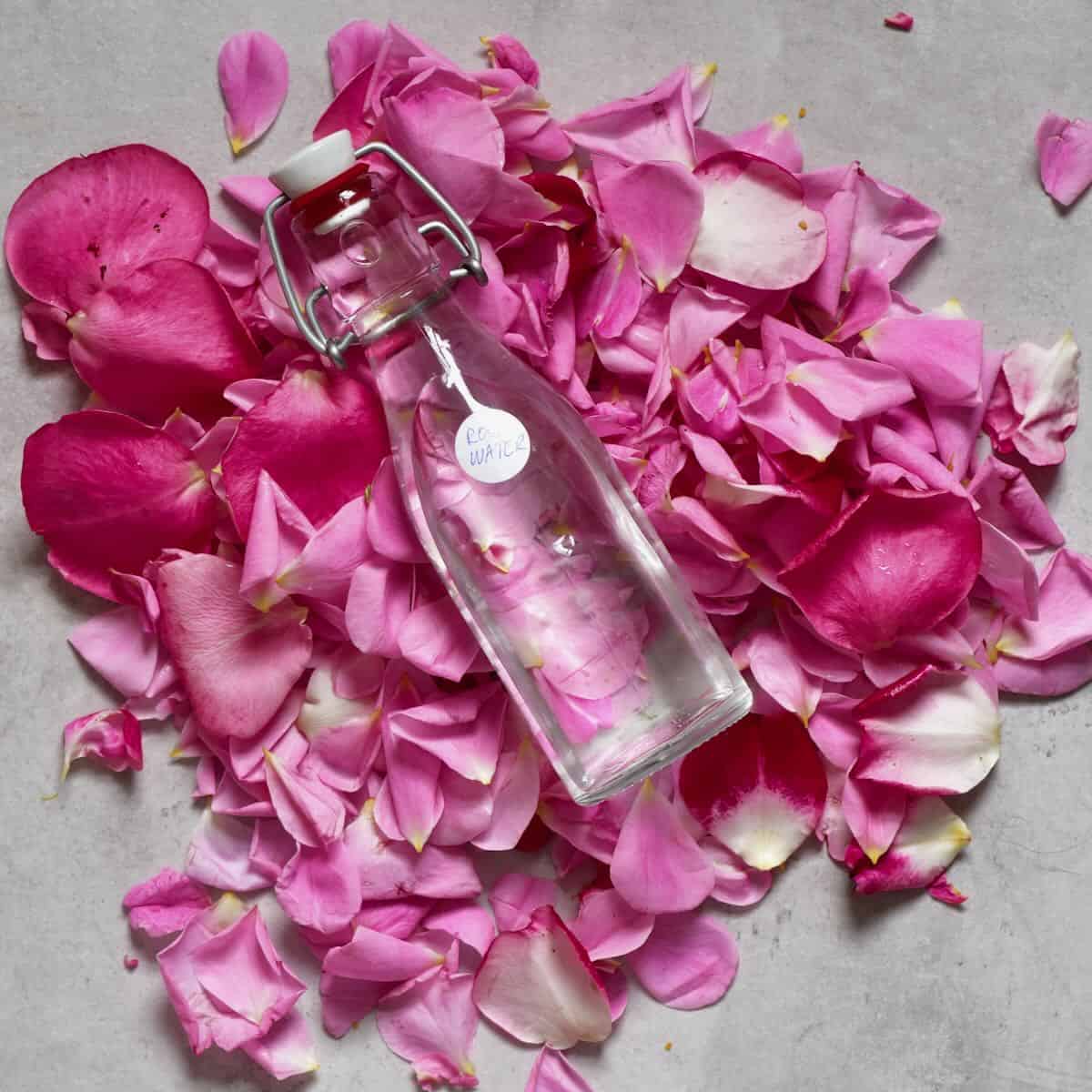
I love all sorts of DIY projects and this homemade rose water is one of my favorites. I find its lovely smell so relaxing, that I can spray it around me all day long. Plus, it can also be used for cooking and in cosmetics so I just had to learn how to make DIY rose water.
Table of contents
Why make rose water at home
If you too enjoy the smell of roses, you’ll love how simple the method of making rose water is and how fragrant it is. Plus, the resulting distilled water is completely chemical-free and is made using just water and organic rose petals. This means that you can use it both as an all-natural beauty product and in the kitchen.
However, to make it safe for consumption rose water needs to be made by distillation – this is the process of evaporating the water and then condensing it back to liquid. Then the distilled rosewater will have all of its impurities removed while keeping the floral aroma and taste of the roses. As this rosewater recipe is very simple, you can then quickly enjoy all of its benefits.
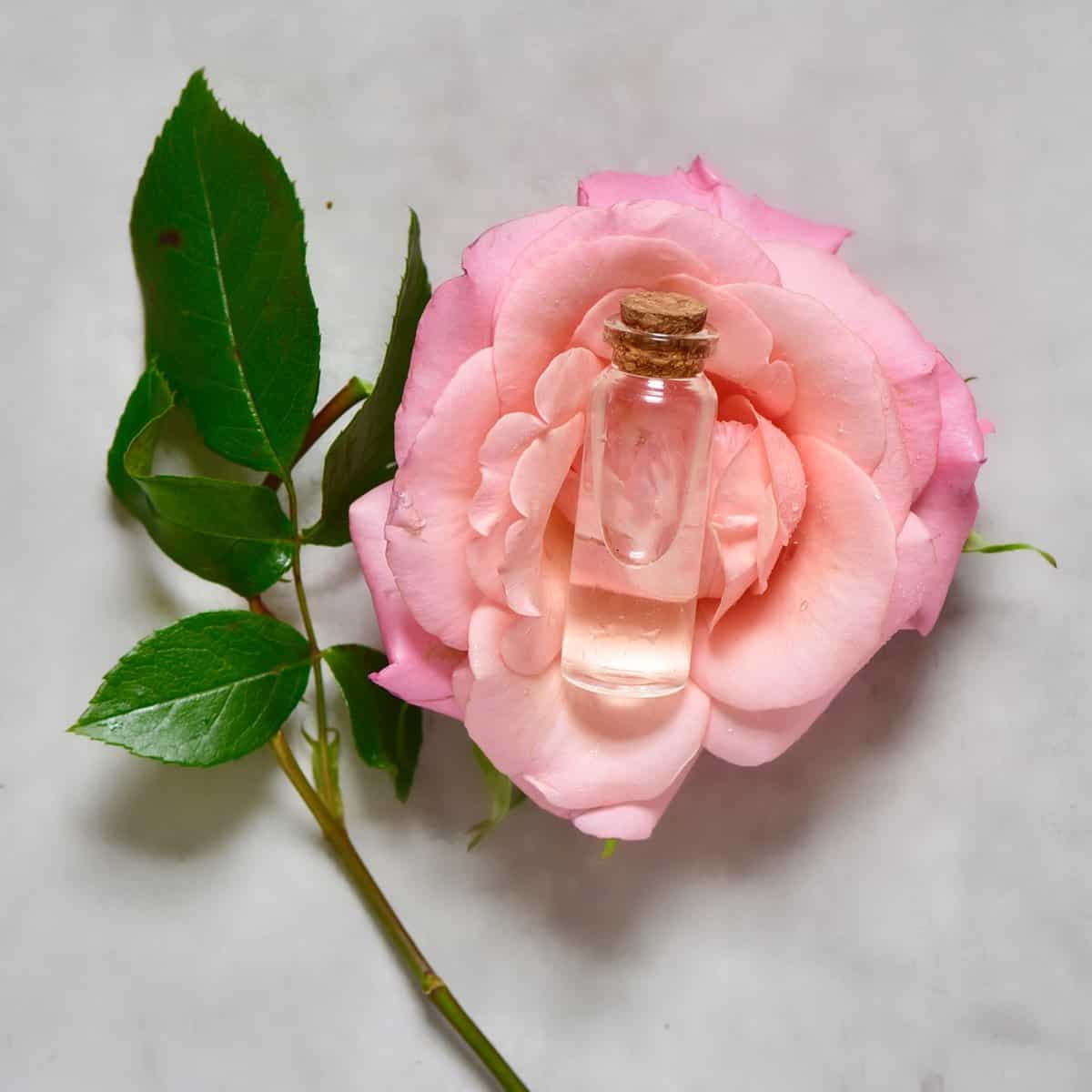
What you’d need
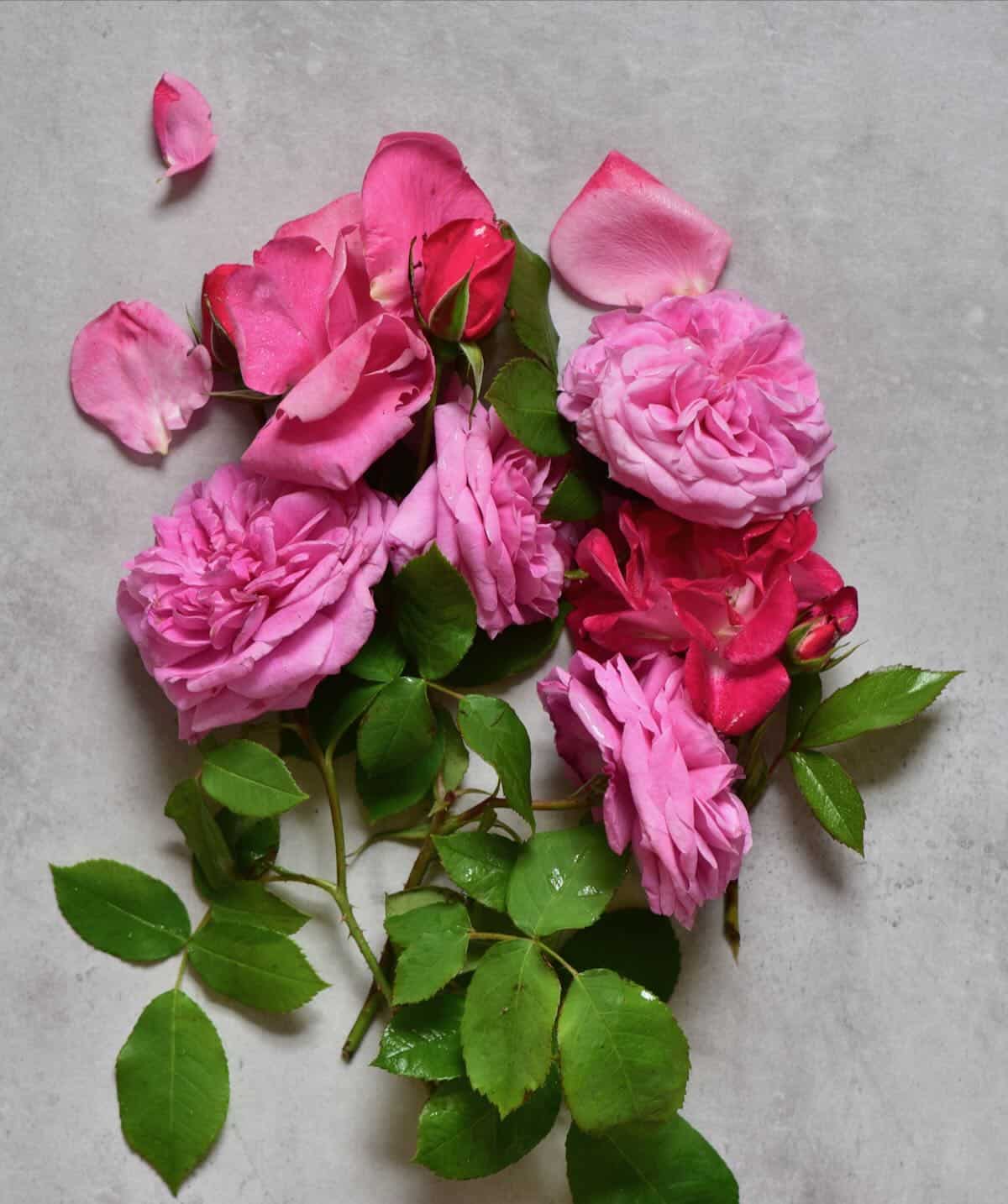
- Fragrant fresh roses: Rosa damascene (damask rose) and Rosa centifolia (centifolia/”cabbage” rose) are great choices but others will work too as long as they are aromatic roses, free of pesticides. Those from the flower shop are often sprayed with pesticides so you shouldn’t use them. Instead opt for unsprayed organic roses, foraged ones, or those from your garden (as long as you know if they are sprayed or not). You need 4-5 blossoms.
- Water: Tap water is fine as we’ll be boiling it. You can also use distilled water.
- Ice cubes: To help with the distillation process.
How to make rose water
Prepare the roses: If you are using roses from your garden, it’s best to pick them first thing in the morning – they will be freshest and most aromatic then. Remove the rose blossoms from the stems, separate the fresh petals, and carefully rinse them to get rid of any dust or little critters.
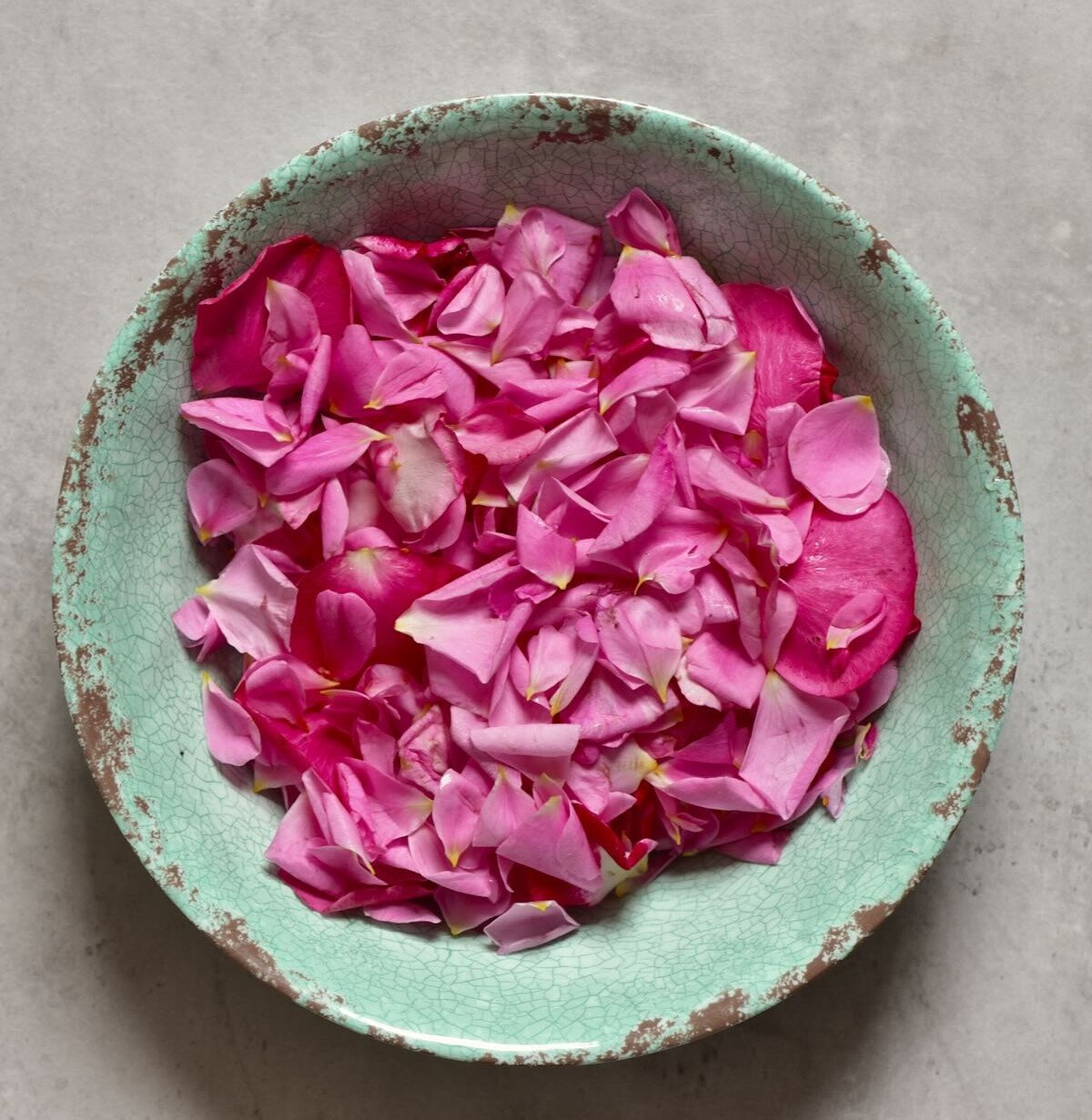
Heat the water and petals: Put a heatproof bowl at the center of an empty pot – this is where the distilled water will collect. Then add the rose petals around the bowl (not inside it). Add enough water to cover the petals. Bring to a gentle boil over medium heat, then let it simmer.
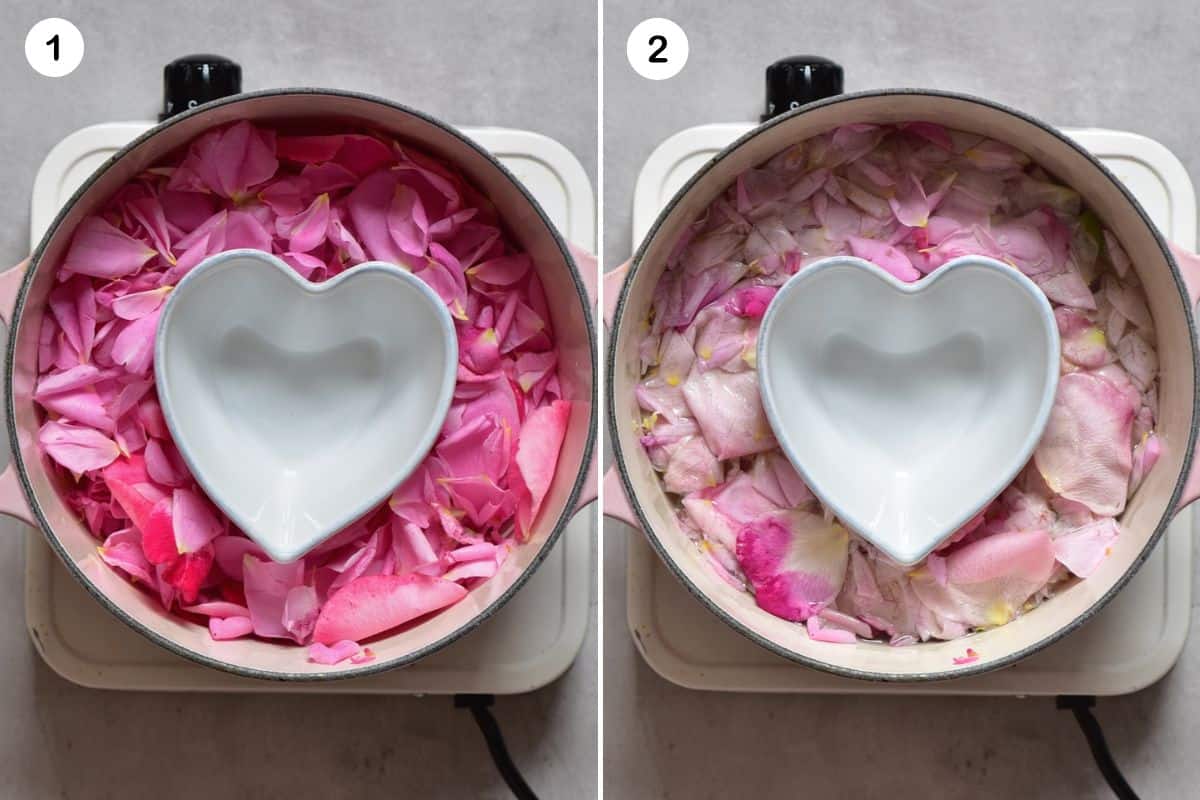
As soon as it boils, place the lid on upside down so the handle is facing into the pot. The inverted lid will help catch the vapor for this distilling method so the water can roll down and drip into the bowl.
Ice the lid to distill the water: Next, add some ice to the top of the lid. As soon as it melts, add more ice cubes. This helps with the condensation of the evaporated water under the lid. You can spoon off the melted ice or use a towel to soak it up. Keep repeating this step for about 20-30 minutes.
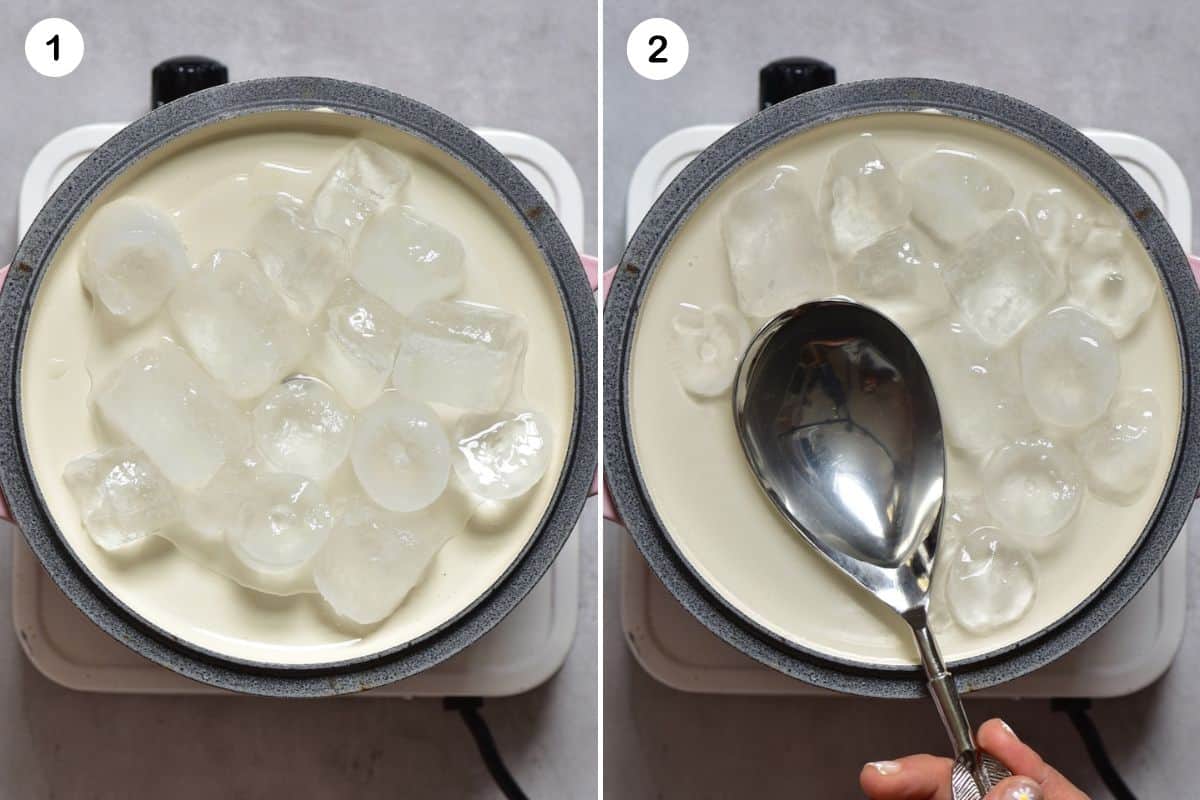
Cool the rose water: In about 30 minutes, the distilled rose water will be ready. It should have condensed into the bowl in the middle of the saucepan and should be completely clear.
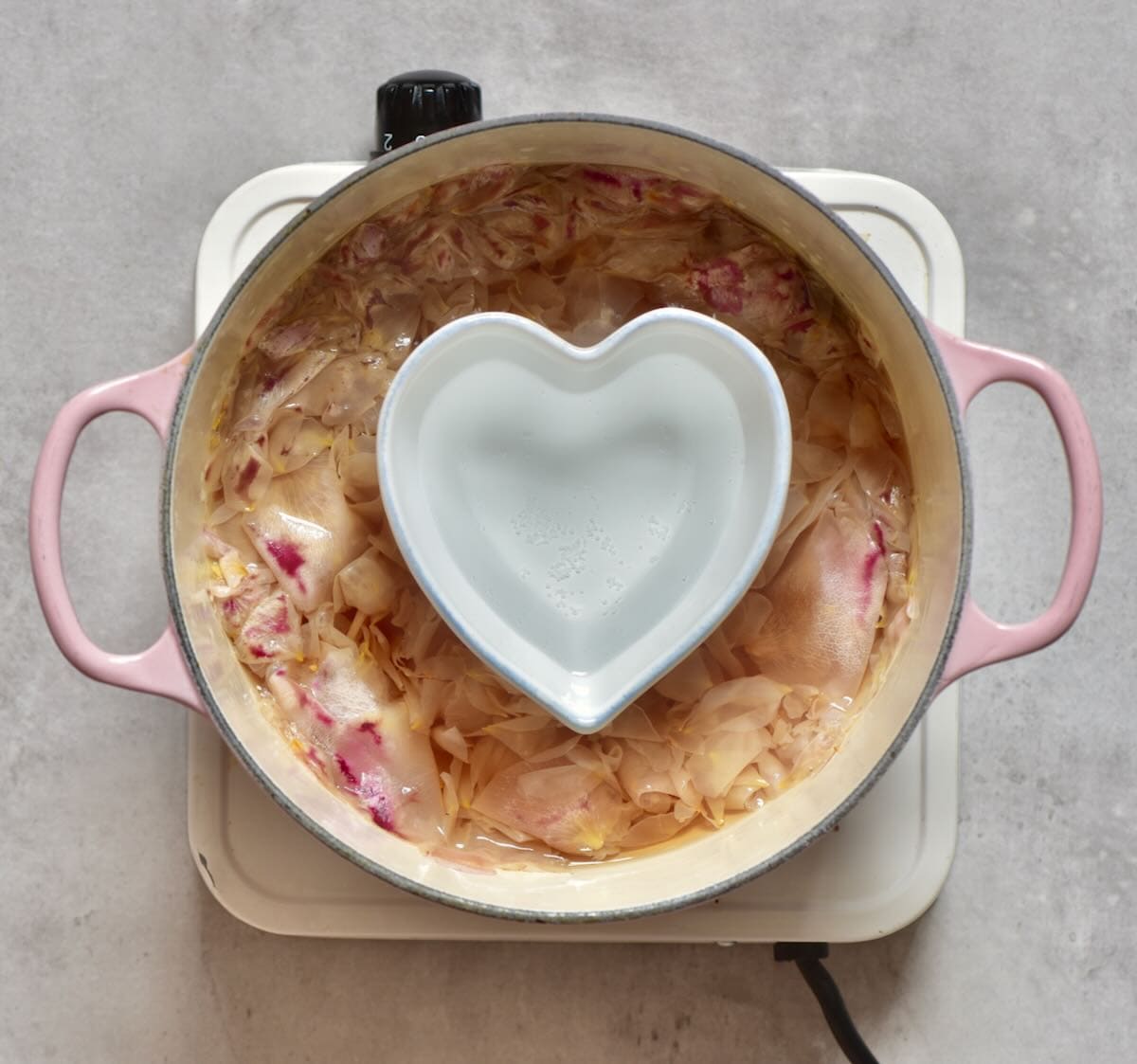
Finally, carefully remove the bowl as it is hot. Set it aside to cool down, then pour the rose water into a clean glass container.
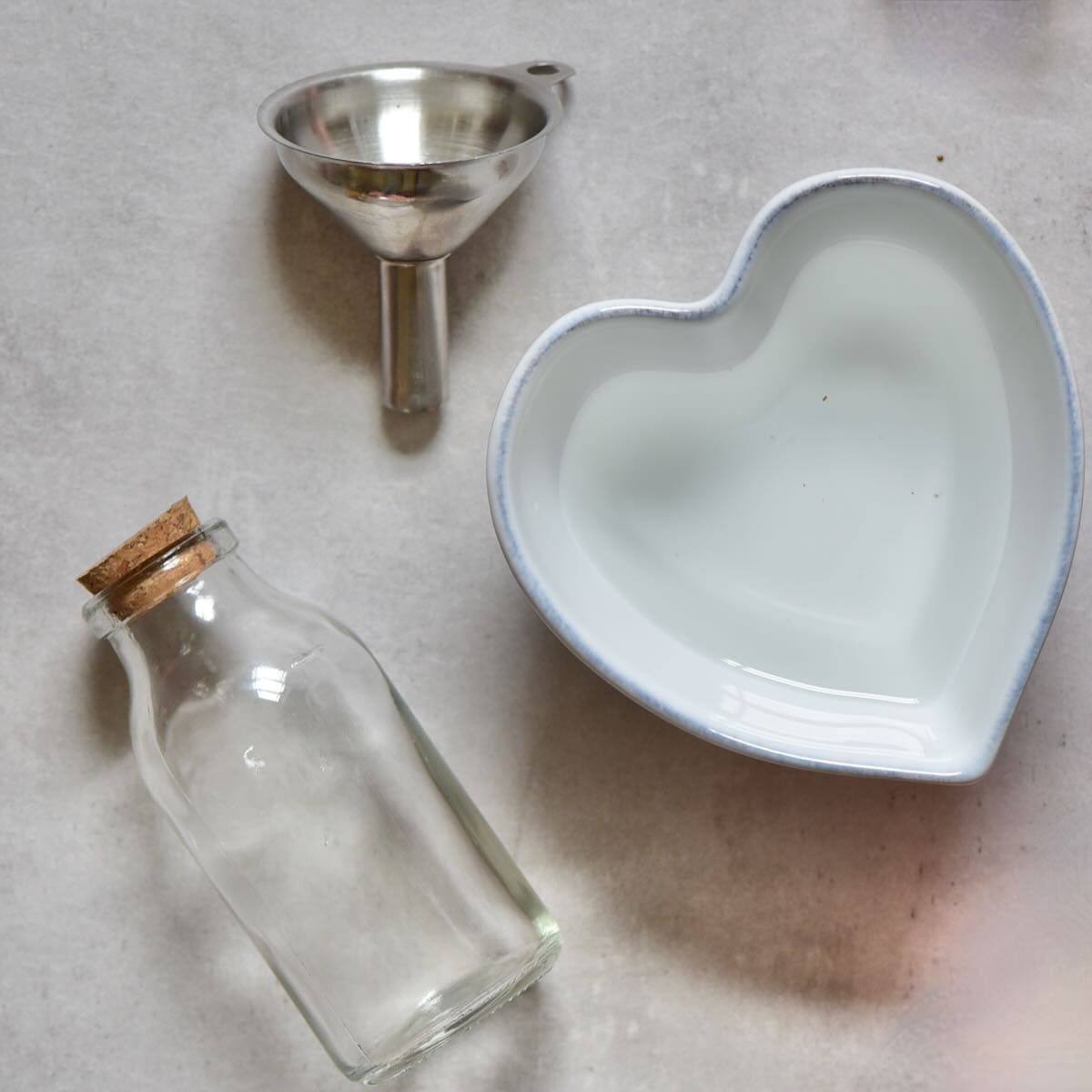
Video tutorial
Storage
Store the rose water in a glass container or a spray bottle in a cool dry place. Make sure to keep it out of direct sunlight and heat. When stored properly, it can last for months, if not even years.
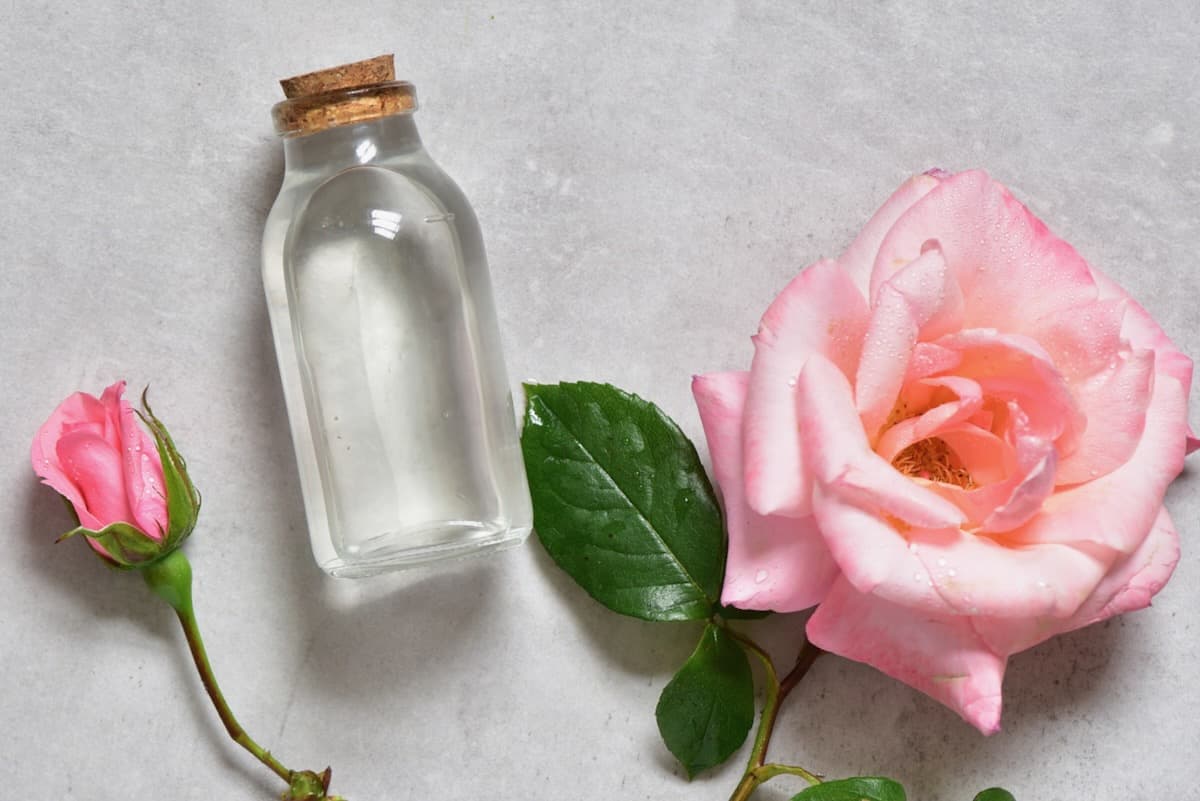
How to use rose water
Because this is pure distilled rose water, you can use it both for cooking and for beauty.
- Aromatic mist: It’s great to be used as a room spray! You can even spray it onto your pillow at night to help you sleep better or added to your bathtub for an aromatic bathing experience.
- Add to drinks: Add a few drops for a delicate floral flavor in cocktails or summer drink recipes like this Fresh Raspberry Lemonade.
- Use in desserts: A lot of traditional Middle Eastern desserts use rosewater, like baklava, bread pudding, or ashta cream. You can also add a drizzle to ice cream, tarts, and more.
- Skincare: Rosewater hydrates and refreshes the skin so you can use it as a natural facial toner, add it to a body lotion/moisturizer, or use it as hair perfume.
More rose recipes and DIYs
If you try this rose water recipe, let me know how it goes in the comments below. I’d appreciate a recipe card rating and would love to see your recipe recreations – tag me on Instagram @Alphafoodie!
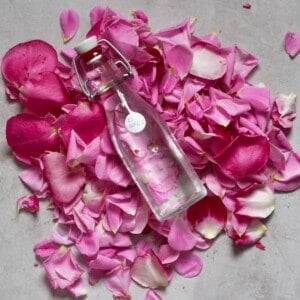
How to Make Rose Water
Ingredients
- 4-5 blossoms of fragrant organic roses make sure they are pesticide-free
- 3-4 cups water enough to cover the petals in your pot
- 3-4 cups ice cubes
This will yield about 1/2 cup (125 ml).
Instructions
- Remove the rose blossoms from the stems, separate the fresh petals, and carefully rinse them to get rid of any dust or little critters.
- Put a heatproof bowl at the center of an empty pot. Add the rose petals around the bowl (not inside it).
- Add enough water to cover the petals. Bring to a gentle boil over medium heat, then let it simmer.
- As soon as it boils, place the lid on upside down so the handle is facing into the pot.
- Add some ice to the top of the lid. As soon as it melts, add more ice cubes. You can spoon off the melted ice or use a towel to soak it up. Keep repeating this step for about 20-30 minutes.
- In about 30 minutes, the distilled rose water will be ready. It should have condensed into the bowl in the middle of the saucepan and should be completely clear.
- Carefully remove the bowl as it is hot. Let it cool down.
- Pour the rose water into a clean glass container and store it in a cool dry place.
Video
Notes
Nutrition
Nutrition information is automatically calculated, so should only be used as an approximation.

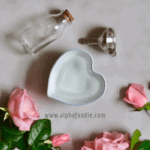
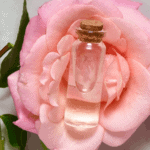
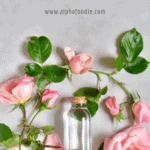

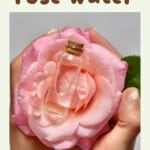
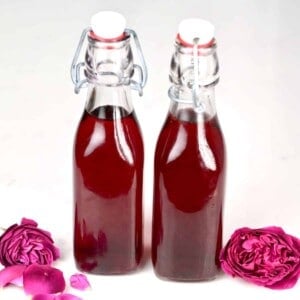
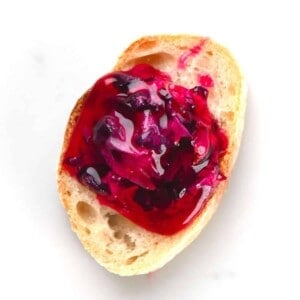
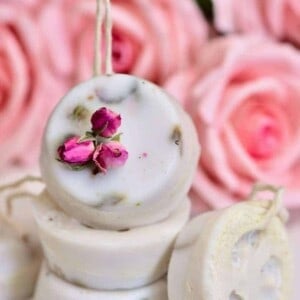









I made this with distilled water and organic roses from my backyard. Strained the petals from the water using a mesh sieve, then a cloth bag for straining jelly, and poured into canning jars that were dishwasher clean but not sterilized. After they had cooled, capped one jar with a plastic cap, the other with a used canning lid and ring, and stored in the pantry. It’s been warm, but the a/c keeps the house at 77 degrees or cooler.
Within a few days they both had a film, and by one week had a layer of mold floating on top.
What went wrong?
Hi Shirley,
You are meant to collect the condensed water in a small bowl in the middle of the saucepan – this is the distilled rose water you can keep and use. The process of evaporating the water & then condensing it back to liquid clears it of impurities and makes it safe. Please don’t mix it with the petals.
The water in which the petals were placed can be disposed of or, if you want and as it smells nice, use it only as a room spray for a few days. It’s not meant to be kept. I hope this helps.
Great article, I liked it very much congratulations!! 76992983
Thank you.
Would this process work with other flowers? For example lilac or jasmine?
Hi Diana,
This process can work with other flowers. It can work to make jasmine water. But it might not work for lilac as it is known to lose its floral essence when heated. I hope this helps.
Is this method possible using dried rose petals?
Hi Nikki,
It’s possible to use the same method for dried rose petals but the resulting water may not be as fragrant or flavorful as rose water made with fresh roses. So I recommend using fresh petals.
I used red roses, and my rose water is red! Does that matter? (This is the distillate, not the water from the pot)
Hi Jen,
The distilled water should not turn red. Were the roses died by any chance? Fresh organic roses, even if red, should still give clear distilled rose water.
Hi Samira,
Thanks for sharing this rosewater recipe. Instead of using distillation with a bowl, could all the water from the saucepan get strained into a separate container after 30min? This should give a better yield, but I’m not sure if this would jeopardize the quality of the rosewater.
Hi Aravind,
Rosewater that is used for cooking or for cosmetics needs to be made by distillation (the process of evaporating the water & then condensing it back to liquid). The distilled rosewater has had all of its impurities removed so it’s safe to consume.
The water in the saucepan in which the petals sit has simply been heated up and thus it’s not as clean. While it smells nice and you can put it in a spray bottle to freshen the air in your room, I wouldn’t recommend using it for cooking or for cosmetic purposes. I hope this helps.
I love this method and you’re getting the real rose water not the diluted version. But I have a question, how do you know when to stop the cooking process? When you have enough rose water or something else ?
Hi Flore,
You can continue for about 30 minutes.
This recipe has brought me so much joy! thank you for helping me to infuse my roses in beautiful ways, and foods, and life in general!
Thank you so much for your comment! So happy you are enjoying this recipe 🙂
Can we use the water we boil the rose petals in? If ever there is more left..
Hello.
The water in which we boil the petals has simply been heated up and thus it’s not as clean. While it smells nice and you can put it in a spray bottle to freshen the air in your room, I wouldn’t recommend using it for cooking or for cosmetic purposes. I hope this helps.
Finally, instructions that actually tell me how to make ROSE WATER! Not ROSE TEA, unlike most of these other directions out here!
Thank you, Faye! Glad you’ve enjoyed it!
Loved it! So simple. About to put in a spray bottle for my face and body!!
Thank you for your comment, Tennie 🙂
If I wanted to add a peppermint oil at which step would I do so?
Hi Katina,
You would have to add it afterwards, you can add a few drops into the bottle you will be storing the rose water in.